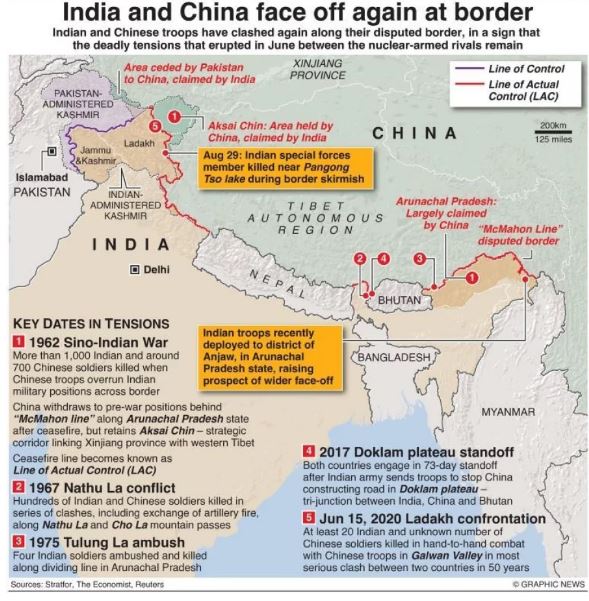India-China Relations at 75: Navigating the Dragon-Elephant Tango

- 04 Apr 2025
In News:
On April 1, 2025, India and China marked the 75th anniversary of diplomatic relations with the exchange of congratulatory messages between President DroupadiMurmu and President Xi Jinping. Both leaders emphasized the need to deepen cooperation, manage differences strategically, and work jointly for regional and global stability. Xi referred to the bilateral relationship as a “Dragon-Elephant Tango,” symbolizing coordinated progress between two Asian giants.
Significance of the 75th Anniversary
The commemoration marks a diplomatic milestone for two ancient civilizations and modern emerging powers, both key members of the Global South. It offers a timely opportunity to recalibrate relations, especially after recent tensions such as the 2020 Galwan Valley clash. Xi called for enhanced “strategic mutual trust” and deeper coordination on global affairs, reflecting a shared responsibility in shaping the international order.
President Murmu and PM Modi stressed multipolarity, stability, and peaceful coexistence. Notably, over 70,000 visas were issued to Indians in early 2025, indicating a revival in people-to-people exchanges. Talks in March 2025 focused on border management and resumption of cultural and religious exchanges, including the Kailash Mansarovar Yatra.
Historical Overview
India was the first non-socialist country to recognize the People’s Republic of China in 1950. The 1954 Panchsheel Agreement promoted peaceful coexistence. However, the 1962 war over the unresolved border disputes—especially in Ladakh and Arunachal Pradesh—remains a lasting legacy of mistrust.
Ties normalized in the 1980s, with Rajiv Gandhi’s 1988 visit paving the way for diplomatic mechanisms like the Special Representatives (SR) dialogue and Working Mechanism for Consultation and Coordination (WMCC). The 2000s saw robust economic engagement, with bilateral trade reaching $138.5 billion by 2024. Both nations became pivotal members of BRICS, SCO, and G20.
Areas of Cooperation
- Multilateral Platforms: India and China coordinate in BRICS, SCO, and on Global South agendas, especially climate finance and equitable development.
- Economic Ties: Despite border frictions, trade remains resilient. China is India’s largest trading partner.
- Cultural Diplomacy: Student exchanges, art exhibitions, and religious pilgrimages continue.
- Public Diplomacy: Diplomatic dialogues, resumed air links, and cooperation on trans-border rivers underscore confidence-building efforts.
Points of Divergence
- Border Dispute: The Line of Actual Control (LAC) remains contentious, especially post-Galwan 2020.
- Strategic Mistrust: China’s ties with Pakistan and presence in the Indian Ocean, as well as its Belt and Road Initiative (excluding India), fuel rivalry.
- Trade Imbalance: India’s import-heavy trade with China leads to a significant deficit.
- Perception Gap: India’s push for strategic autonomy contrasts with China’s assertive regional posturing.
Way Forward
- Strengthen Strategic Dialogue: Revive and regularize SR-level border talks and WMCC meetings.
- Rebuild Trust: Encourage military confidence-building measures and cooperative ventures in non-sensitive areas.
- Balance Trade: Promote diversification and attract Chinese investments aligned with India’s interests.
- Enhance People-to-People Ties: Facilitate educational, cultural, and tourism exchanges.
- Promote Multilateralism: Collaborate on global issues such as climate change, health security, and WTO reforms.
Conclusion
India-China relations remain a blend of cooperation and contestation. The 75th anniversary provides an inflection point to transcend border hostilities and engage in constructive diplomacy. A balanced and long-term perspective, as advocated by both nations, can shift the narrative from conflict to coordinated coexistence—true to the spirit of the “Dragon-Elephant Tango.”
